There are many elements that make up graphic design. In graphic design, images, text, and ideas are mixed in order to direct the viewer to specific content within the project. The elements of graphic design are the areas that every project has within them on a fundamental level. These characteristics of graphic design cover every aspect of the design process. Breaking down even very complicated projects into these elements is possible.
What Is Graphic Design?
To sum up, Graphic design is an art form most often used to create visual content with specific goals in mind. Society often lacks a clear understanding of what graphic designers actually do. Most people will say that graphic designers make company logos or create product adverts. The reality is that graphic design is a vast category to work in and can include everything from designing the company website to how to make a logo and even the layout and design of the office space.
There is a lot of psychology behind graphic design, and specific colors and fonts elicit different emotions from people. Within graphic design, there is a notion that the viewer’s attention should be subtly directed toward the content in the order intended. This can be down to things as small as the order in which your brain recognizes sentences on an advertisement poster. The context in which graphic elements have been used and employed is hugely vast.
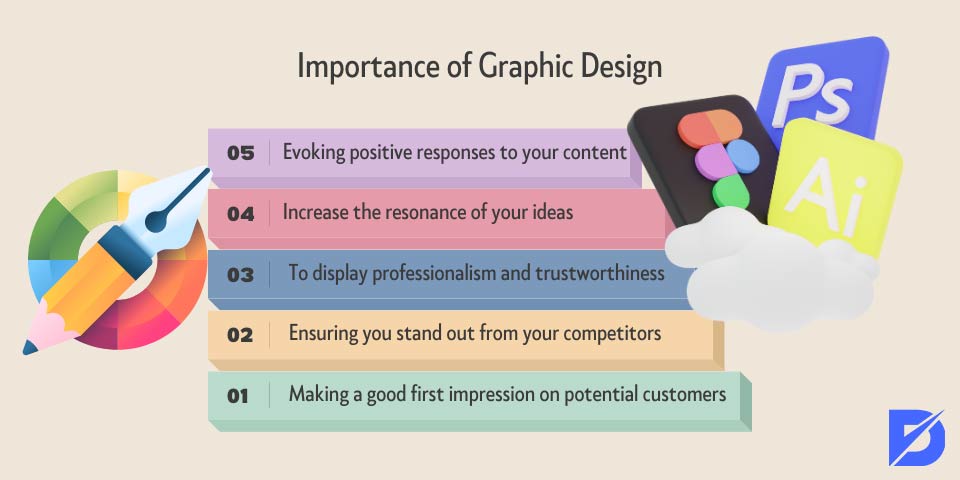
Importance of Graphic Design
Graphic design improves the communication your business has with other people. The improved communication from effective graphical elements leads to achieving many business goals more quickly. Many improvements are possible from observing the basic principles of graphic design, from more effective presentations to adverts, web pages, and product brochures. Graphic design elements help you to improve quickly in the following area:
- Making a good first impression on potential customers
- Ensuring you stand out from your competitors
- To display professionalism and trustworthiness to viewers of your content
- Increase the resonance of your ideas using imagery and design
- Evoking positive responses to your content
Graphic design is an incredibly potent tool for your business to employ to reach its goals more quickly. Many companies use graphic designers for virtually every aspect of their business to improve the effectiveness of the content people see. With effectively designed adverts and visual content, companies save money on advertisements by advertising less to reach the same number of people.
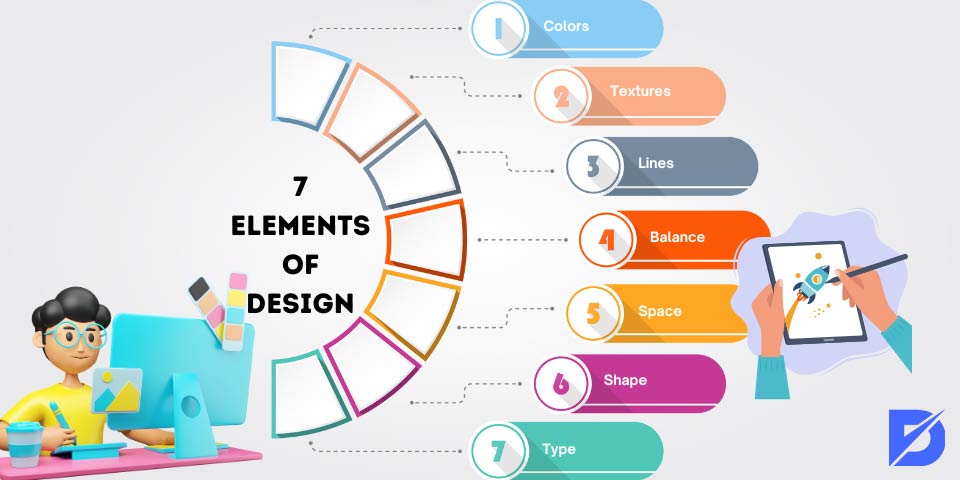
7 Elements of Design
The essential elements of graphic design are the basis of every visual medium. The minor details, even down to the fonts used, play a role in successfully composing the visual content. Here are the seven elements of design:
- Colors
- Textures
- Lines
- Balance
- Space
- Shape
- Type
These elements are visible in every design to some degree. Many designers focus on each component for a well-rounded final design. Each element on its own doesn’t seem particularly powerful, but when they are all combined together, they are a very efficient tool for graphic designers. These elements are part of essentially all of the designs we encounter each day.

Color
Scientists discovered a connection between colors and human emotions, Colour psychology studies which colors evoke which type of emotions and the strength of the feeling they produce. The reactions differ from person to person. However, there are specific universal laws of color effects that are always valid. Therefore, the decisions surrounding a color scheme are important personal decisions for building a consistent and positive brand identity. Colors are also essential in trends, not only in fashion but also in architecture and advertisements. The importance of color in design is the reason why modern styles are completely different colors from retro styles. Colors play a role in the conscious and subconscious design, and their presence can have as much effect as their absence. When colors are used in a targeted manner, they can calm us down, invite us to feel an emotion, or take action.
Lines
Lines are a powerful yet basic element in graphic design. A line connects two or more points and can be thick, thin, wavy, or jagged. Each type of line creates a different feel for the end user. Lines are very common in all forms of design, whether drawings, illustrations, textures, or patterns. You can place particular importance on the text by simply underlining the critical text. They can also direct the viewers’ gaze by organizing and segregating different sections of content. Other factors to remember when using lines in graphic design are the width, texture, style, and even the color of the lines.
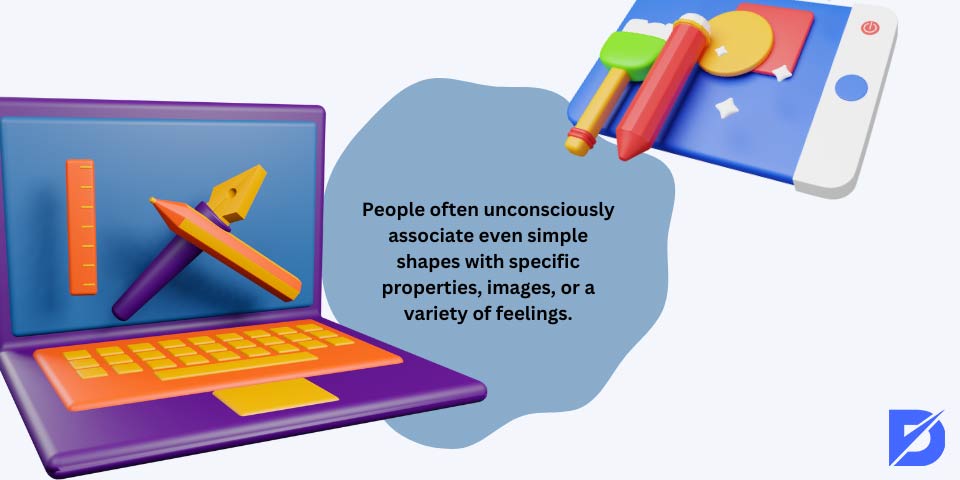
Shapes
Similar to colors, shapes have fundamental laws that apply to their use. For example, circles are generally viewed as feminine, whilst squares are usually seen as more masculine. People often unconsciously associate even simple shapes with specific properties, images, or a variety of feelings. An example of this is when you get a warm, happy feeling when looking at a sunny autumnal picture.
Designers frequently discuss shapes as they are an integral feature in many design trends, either with other design elements or alone. Some shapes are used a lot in popular trends because they reflect society’s current topics, moods, and feelings. Therefore, it is vital to use shapes actively in your designs, whether for your WordPress web design services or advertisements. They play an essential part in evoking the responses you are after from the audience. Forms you should consider using include; natural or organic shapes, abstract shapes, spirals, or basic geometric shapes. Basic geometric shapes are often the base of both graphic design and art.
The Use of Space
Graphic designers use space to describe the distance between elements in design and the design objects. White space or empty space is also a very effective tool to use in graphic design. An incredibly simple example is placing a photograph on a piece of paper. The space not covered by the picture is the white space. Designing white spaces is one of the most crucial tasks in compiling a professional graphic design. Sufficient white space on a page is vital for the viewer’s experience as it provides them with the chance to rest their eyes in one place. The fact that users’ eyes will linger in white space indicates the use of space is essential for creating a solid design.
Using Textures
The use of textures is incredibly important in professional graphic design. Textures are vital because they can increase other elements’ weight or visual presence in the overall design. Textures are directly related to how we would interpret the look and feel of things we see if they were actually in front of us. By describing the surface quality of design elements and works of art, textures are able to transport our brains into a unique place. Imagine looking at a good-quality carpet drawing; your brain would instantly tell you it would feel soft if you touched it. Textures create a visual balance between other elements, generate contrasts, and find a balance.
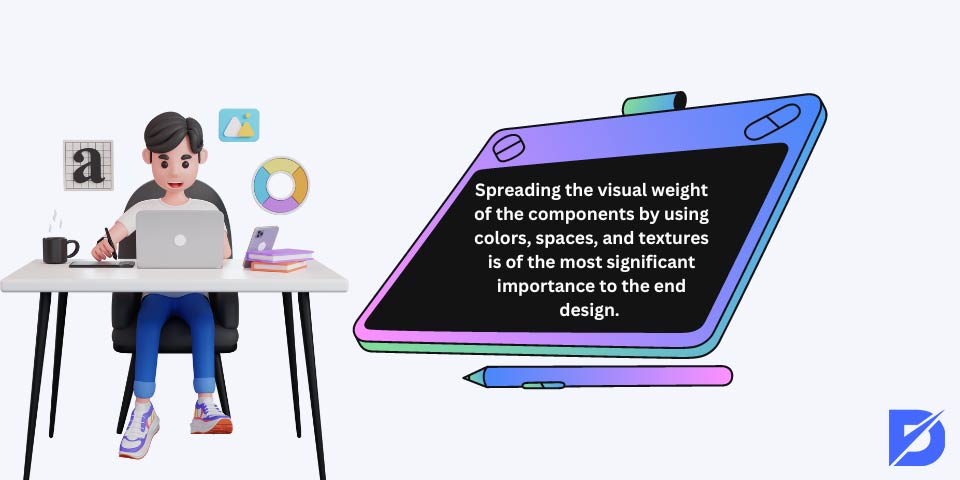
Balance
An impressive design is constructed of more than just the elements of graphic design. The distribution of each element is vital to the overall look and feel of the completed design. Spreading the visual weight of the components by using colors, spaces, and textures is of the most significant importance to the end design. There are five different types of balance to keep in mind. They are; radial balance, asymmetrical balance, symmetrical balance, discordant balance, and mosaic balance.
Type
Selecting a font is an essential part of many graphic design projects. It is important to ensure that the chosen type is legible and of an appropriate style for the subject. The type has an effect on the overall mood and feel of a design. Think carefully about whether the letters should be script or print or have rounded or sharp angles. Large bold letters display to users that the particular word is important. Too much bold text, however, can disrupt the overall balance of the design. In Contrast, thin lettering can imply both being modern and having an air of elegance whilst conveying a slight fragility. Font size is also important to help direct the end user’s gaze to the most vital areas in the text first.
Conclusion Graphic Design Elements
To conclude, graphic design elements have a large variety of applications in any project that uses text and images to convey ideas. By learning to combine each element within your designs, the designs themselves will become more appealing and communicate more effectively. After learning a bit about graphic design, you will now notice the cleverly thought-out graphic designs that surround us each day, from billboards in the subway to the layout of the news website on your phone. Hopefully, you have enjoyed reading this article about the elements of graphic design.
Frequently Asked Questions About
You may find two simple interesting shapes to start with: Rectangles are commonly used in website design because of the grids and columns, making the pages look professional and organized. Triangles, however, can represent power, purpose, progress, and direction.
Everywhere. Essentially every single piece of content you consume each day has been created by a graphic designer. Many content creators online are their own graphic designers, potentially without knowing it. Every choice about the font, colors, layout, and many other decisions falls into the category of graphic design.
The main types of graphic design include; web and mobile design, print design, brand design, product design, environmental design, animation design, and publishing design.
Graphic design’s main objective is to convey specific messages, ideas, or information by using visually creative products.
A graphic designer will compile art created by artists and the type and other information to share an idea or message with the target audience. A graphic artist is commissioned to create art for a specific section of a graphic designer’s project.



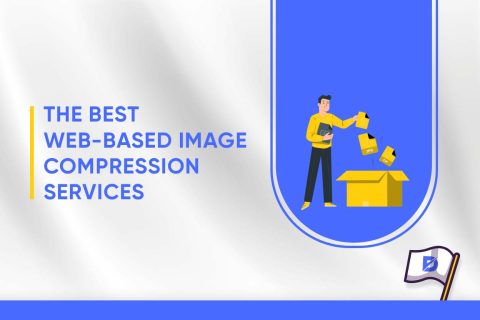

No comments to show.